
Historic Photos Show Faces in Unexpected Places
The Library of Congress has released a fantastic series of historical photos that show faces in unexpected places.

The Library of Congress has released a fantastic series of historical photos that show faces in unexpected places.
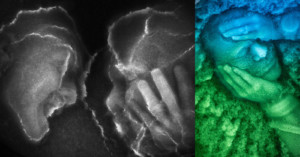
My Snow Portrait series consists of photos taken using a technique I "invented" 8 years ago that utilizes the "hollow mask" 3D optical illusion. All the shots in this article are imprints of my face in fairly deep snow lit from underneath, almost like a lithophane. No Photoshop. No filters.
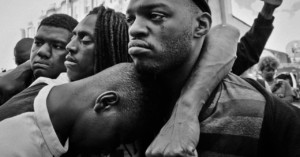
Editor’s note: Veteran photojournalist Yunghi Kim (@yunghi) sent me the following thoughts after the publication of my article about the ethics of showing protestors’ faces.
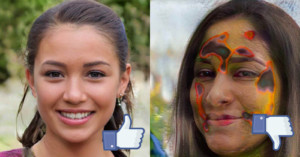
NVIDIA's mind-blowing AI that generates faces of people who don't exist recently led to an unofficial website called thispersondoesnotexist.com that lets anyone generate a new random face in an instant. Creative director Mike Solomon has built upon the idea with a new website called Judge Fake People that experiments with letting the public rank the attractiveness of AI-generated faces.
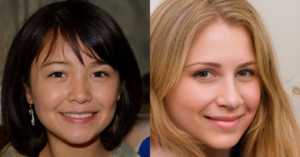
NVIDIA got the world talking in December 2018 after showing off a new AI that can create ultra-realistic photos of people who don't actually exist. Now there's a website that lets you generate these imaginary portraits yourself. It's called thispersondoesnotexist.com.
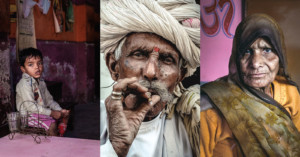
I recently came back from a trip to India. I left the UK with the intent of photographing a culture entirely different from mine. Searching for a new challenge, I looked at India in the eyes, and I faced myself.

For his latest project, titled "The Blood Forest," French photographer Philippe Echaroux shot a series of photos showing portraits of indigenous Brazilians projected onto the trees of the Amazon rainforest.
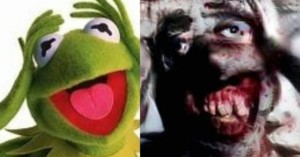
A trio of scientists from MIT's Media Lab decided to get creative for Halloween ... and just maybe scare the pants off of you. So if you're wondering how Kermit turned into undead Kermit, meet the aptly-named 'Nightmare Machine.'
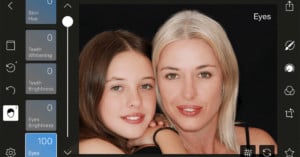
Polarr's powerful and popular photo-editing app on iOS was just upgraded to version 3.0, and the new update brings powerful face detection and editing tools that are being seen for the first time in Apple's App Store.
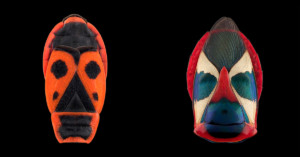
Fine Art photographer Pascal Goet has been capturing macro photos for 26 years, but it's only today that his work made its way onto our radar. His series Mask & Totem features some of the most colorful, anthropomorphic insects he's photographed—insects that looks like mysterious, intricate masks.
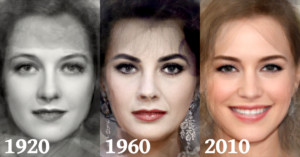
How has Hollywood's idea of female beauty changed over the past century? Here's a collection of averaged portraits that tries to answer that question.
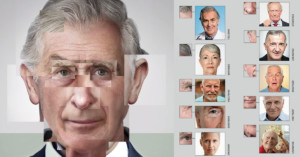
Getty Images has launched a creative new global advertising campaign titled "Millions of Images. Endless Possibilities." The 46-second video above shows a series of famous faces that were reconstructed entirely using various stock photo faces that aren't of those people.

In the US, about 25% of people have a mutated Melanocortin 1 Receptor (MC1R) gene that causes red hair. Thus, the chance of any two random people having a red-headed child is about 2%, or 1 out of every 64 people.
London-based photographer Michelle Marshall wanted to show that people with red hair aren't always of Caucasian descent, so she began finding and photographing Afro-Caribbean people with red hair.
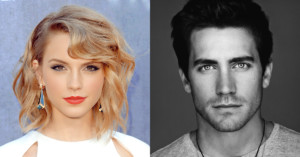
Pedro Berg Johnsen of Norway has an unusual hobby: in his spare time, he combines portraits of celebrities to create real-looking photos of people that don't actually exist. For example, the portrait above was created by blending the heads and faces of singer Taylor Swift and actress Emma Watson.
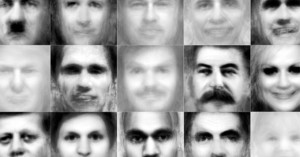
What do you get when you combine 50 portraits of the same famous face and averaged the result? Reddit user Dwainosaur dared to not only ask the question but to pursue it. He gathered up a large collection of photos and wrote a script for averaging the results. Subjects include Brad Pitt, Jack Black, Billy Murray, and Barack Obama. Infamous faces include Adolph Hitler and Joseph Stalin.
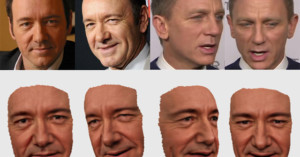
Celebrities now have another reason to shy away from paparazzi photographers. Scientists have created a new technique for creating controllable digital versions of celebrities using only a set of paparazzi photos to reconstruct faces and create convincing expressions.
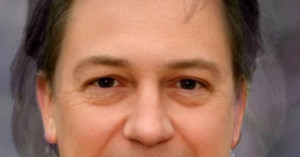
The image above may look strangely familiar to you. That’s because it’s a facial average of the leaders of the main political parties in this week’s general election in the UK. If you've been following UK politics, you have probably seen these people many times in the media, leading to an involuntary familiarity with them.
A facial average like the one above is created by digitally altering each person’s face to a matching position and expression, and then morphing them all together to create an average.
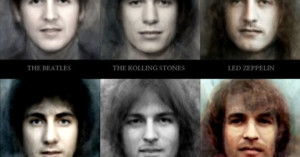
What do famous rock bands look like if you take portrait photos of each of their members and average them into a single face? The folks over at West Coast Shaving recently decided to find out.
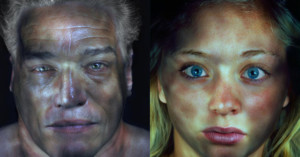
Photographer Gary Schneider shoots portraits with a rather unusual technique. For his project titled Faces, Schneider had his subjects lie on a black backdrop under his large format camera and then sit still for eight minutes while Schneider slowly illuminated the details of their faces with a small light.
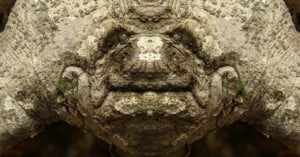
Italian photographer Elido Turco spent four years between 2004 and 2008 exploring a mirrored photography world that remains invisible to most of us. By taking photographs of tree bark and then mirroring the photographs he captured, he discovered a whole society of "Dream Creatures" were watching him each time he would take a stroll through the mountain paths.
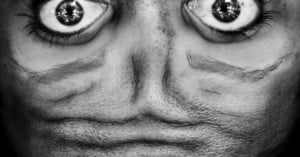
Self-help author Wayne Dyer once wrote that, "If you change the way you look at things, the things you look at change." Photographer Anelia Loubser of Cape Town, South Africa used this quote as the basis for her project titled "Alienation.
The series consists of contrasty portraits that have been flipped upside down, turning the ordinary faces into strange, alien mugs.
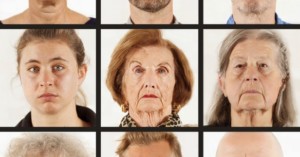
Using an industrial–strength robotic arm, custom software, a Canon EOS Mark ll and a 180mm macro lens converted into a telecentrical lens, Swiss photographer Daniel Boschung has created an automated portrait machine. Made to map out "Face Cartography", the machine and resulting images capture incredibly detailed and hyperrealistic photographs of subjects.
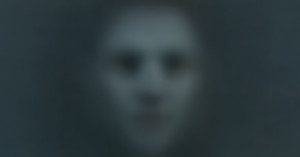
No, the creepy face above isn't a still frame of He-Who-Must-Not-Be-Named taken from one of the Harry Potter films. It's actually a composite portrait of countless faces found in the 2009 James Cameron science fiction film Avatar.
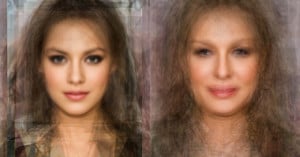
A while back, PetaPixel posted some features about image averaging and faces. Richard Prince created a composite portrait of the 57 faces of girlfriends on Seinfeld. This led to Pat David exploring the averaging of faces with Martin Schoeller’s portraits of celebrities.
I’ve long been interested in image averaging as well; as a measure of central tendency, I like that image averaging can highlight similarities and differences across an array of seemingly equivalent images.
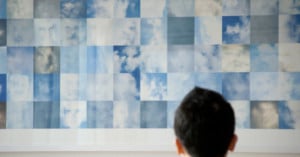
As humans, it's only natural to take a look at the sky and perceive to see an object, a face, an animal. Computers, too, are capable of this perception. However, they may be capable of finding things that the human eye can't, or just might not notice.
In a project called "Cloud Face", Seoul, South Korea-based Shin Seung Back and Kim Yong Hun of aptly-named 'Shinseungback Kimyonghun' have pointed cameras up at the sky and let complex algorithms detect faces in the passing clouds.
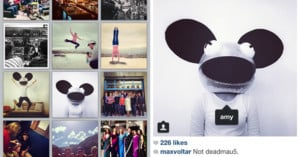
One of the key features afforded by the fusion of photo sharing and social networking is people tagging. On services such as Facebook and Flickr, adding information to identify the people in photos is as easy as clicking/tapping a face and telling the service who that subject is.
Instagram this morning announced that it's joining in on the people-tagging fun. The company has released a new "Photos of You" feature that makes tagging a person as easy as adding a hashtag.
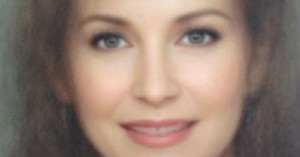
The woman in this portrait doesn't actually exist. The face is actually the average of 57 different women -- 57 girlfriends that appeared in episodes of the popular TV sitcom Seinfeld.
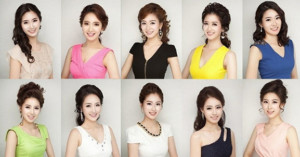
The web is abuzz over newly released photographs of Miss Korea 2013 beauty pageant contestants, and not in a way the photographer or the pageant were expecting. The photographs have sparked heated discussion on the topics of plastic surgery and racism.
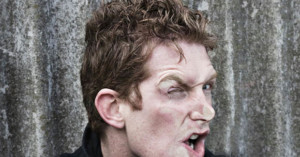
"The Ugly Truth" is a bizarre series of portraits by photographer Rut Mackel. Each photo features a not-very-pleasing photo of a face that looks flatted and disfigured. No, the subjects don't actually look like that, and no, Mackel didn't use any kind of digital manipulation for the photos. She simply asked her subjects to hold a pane of glass and then press their faces against it.
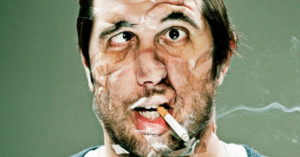
For the past couple of months, Albuquerque, New Mexico-based photographer Wes Naman has been working on a lighthearted personal project called "Scotch Tape," a series that features bizarre portraits of subjects who have their faces wrapped tightly with strips of Scotch tape.